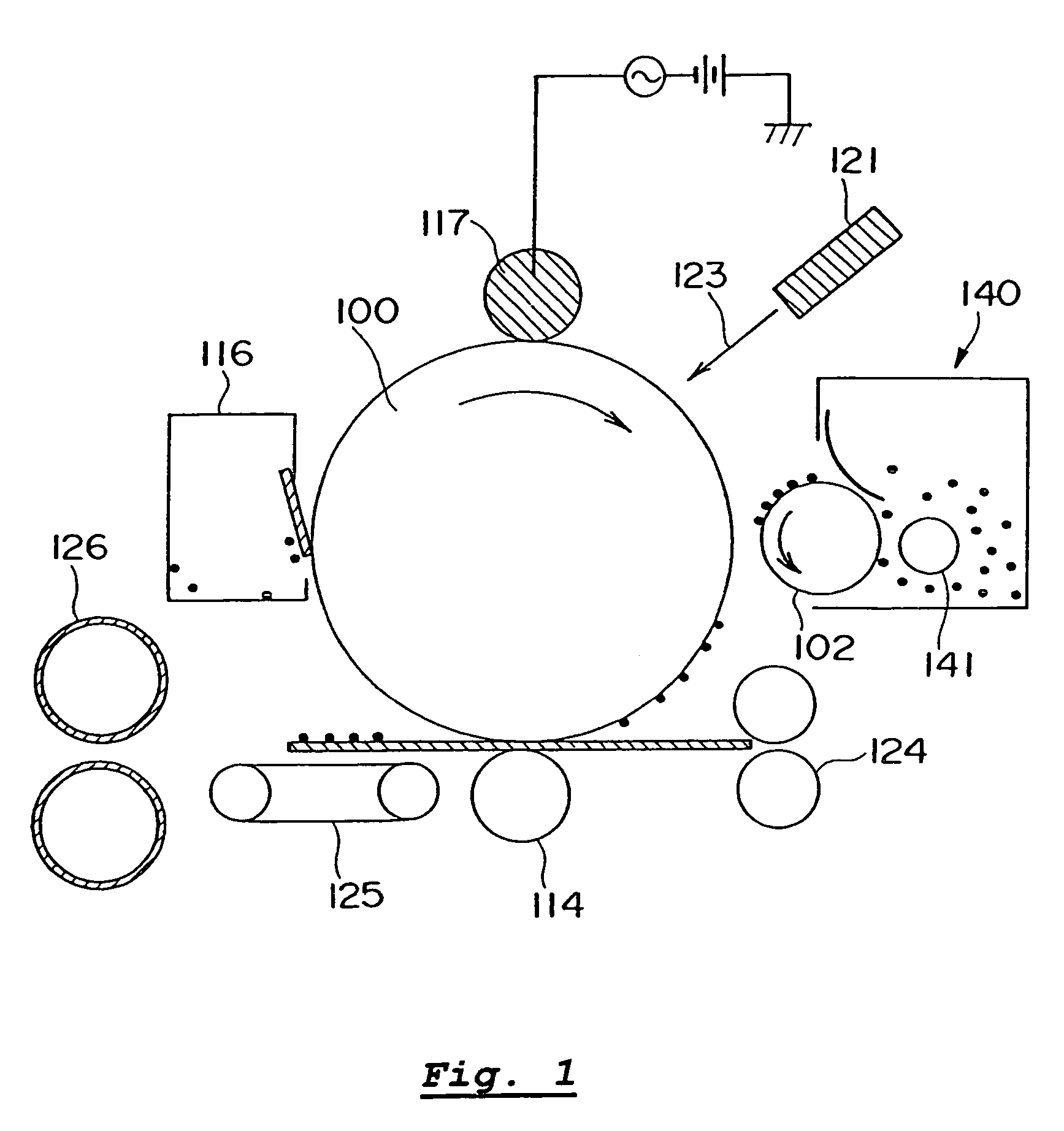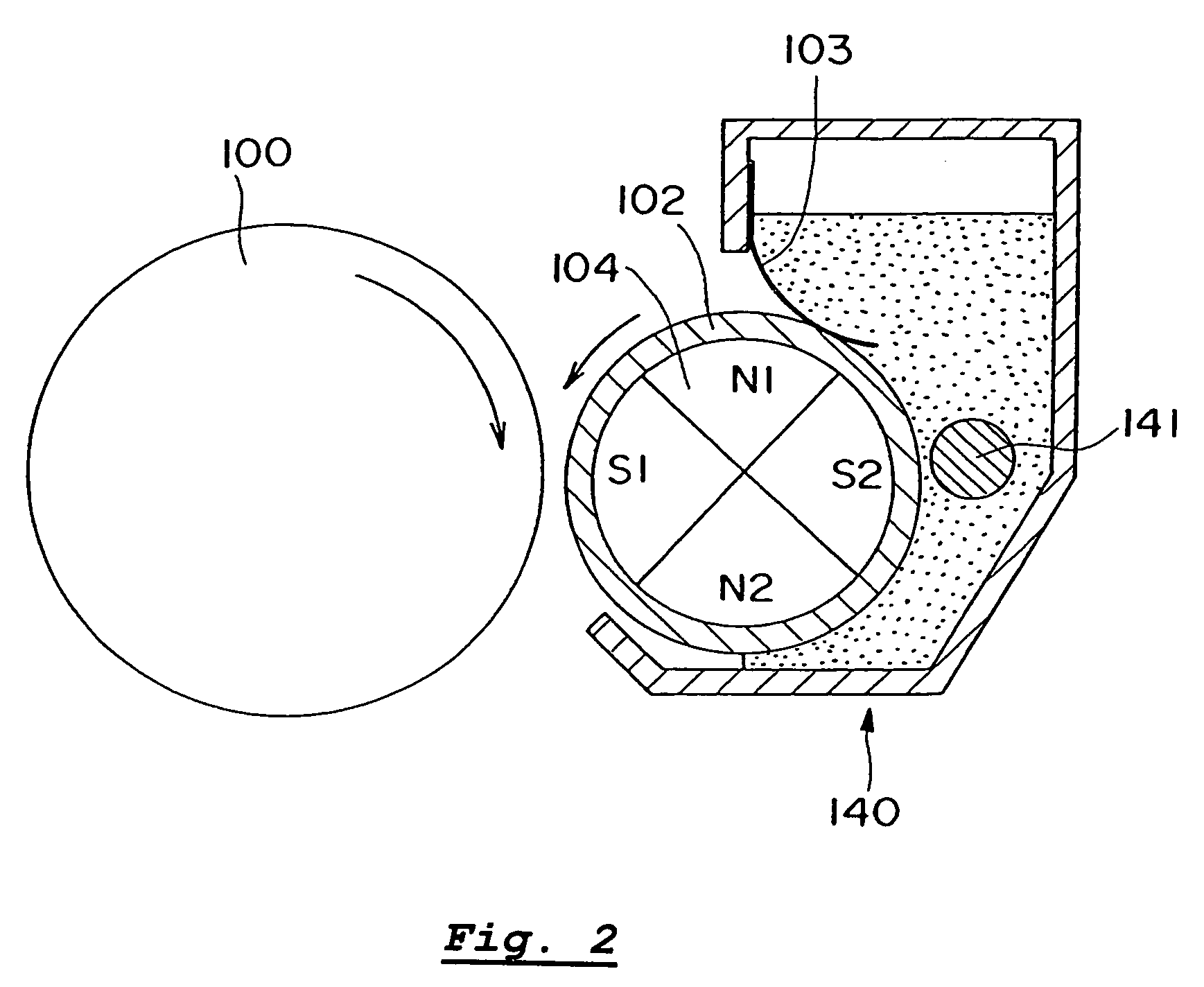Magnetic toner and method of manufacturing magnetic toner
a technology of magnetic toner and manufacturing method, which is applied in the field of magnetic toner, can solve the problems of reduced flowability, environmental stability, and reduced frictional chargeability of toner, and achieves the suppression of fogging, stable charging performance, and high image density
- Summary
- Abstract
- Description
- Claims
- Application Information
AI Technical Summary
Benefits of technology
Problems solved by technology
Method used
Image
Examples
example 1
[0222]Used as an image forming apparatus was a remodeled apparatus of LBP-1760 (manufactured by Canon Inc.) and having such a configuration as one shown in FIG. 1.
[0223]An electrostatic image bearing member (photosensitive drum) of the apparatus had a dark-part potential Vd of −700 V and a light-part potential VL Of −150 V. A gap between the electrostatic image bearing member and a developing sleeve was 290 μm. Used as a toner bearing member was a developing sleeve having a resin layer with a thickness of about 7 μm (JIS central line average roughness (Ra)=1.0 μm; a layer formed by dispersing 90 parts of graphite (particle diameter about 7 μm) and 10 parts of carbon black into 100 parts of phenol resin) formed on a surface-blasted aluminum cylinder having a diameter of 16 mm. A urethane blade having a thickness of 1.0 mm and a free length of 0.5 mm was used as a toner regulating member, and was brought into contact with the developing sleeve under a linear pressure of 29.4 N / m (30 g...
examples 2 to 10
[0250]In each example, an image output test was performed under conditions identical to those of Example 1 by using any one of the magnetic toners B to J. As a result, initial image properties presented no problems, and each example provided a result without a serious problem until the printing of 10,000 sheets. Table 3 shows the evaluation results under a normal-temperature and normal-humidity environment while Table 4 shows the evaluation results under a low-temperature and low-humidity environment.
example 11
[0279]Used as an image forming apparatus was a remodeled apparatus of LBP-1760 and having such a configuration as one shown in FIG. 1.
[0280]An electrostatic image bearing member (photosensitive drum) of the apparatus had a dark-part potential Vd of −650 V and a light-part potential VL of −130 V. A gap between the electrostatic image bearing member and a developing sleeve was 270 μm. Used as a toner bearing member was a developing sleeve having a resin layer with a thickness of about 7 μm (JIS central line average roughness (Ra)=1.0 μm; a layer formed by dispersing 90 parts of graphite (particle diameter about 7 μm) and 10 parts of carbon black into 100 parts of phenol resin) formed on a surface-blasted aluminum cylinder having a diameter of 16 mm. A urethane blade having a thickness of 1.0 mm and a free length of 0.5 mm was used as a toner regulating member, and was brought into contact with the developing sleeve under a linear pressure of 39.2 N / m (40 g / cm). In addition, a magnet r...
PUM
 Login to View More
Login to View More Abstract
Description
Claims
Application Information
 Login to View More
Login to View More - R&D
- Intellectual Property
- Life Sciences
- Materials
- Tech Scout
- Unparalleled Data Quality
- Higher Quality Content
- 60% Fewer Hallucinations
Browse by: Latest US Patents, China's latest patents, Technical Efficacy Thesaurus, Application Domain, Technology Topic, Popular Technical Reports.
© 2025 PatSnap. All rights reserved.Legal|Privacy policy|Modern Slavery Act Transparency Statement|Sitemap|About US| Contact US: help@patsnap.com



